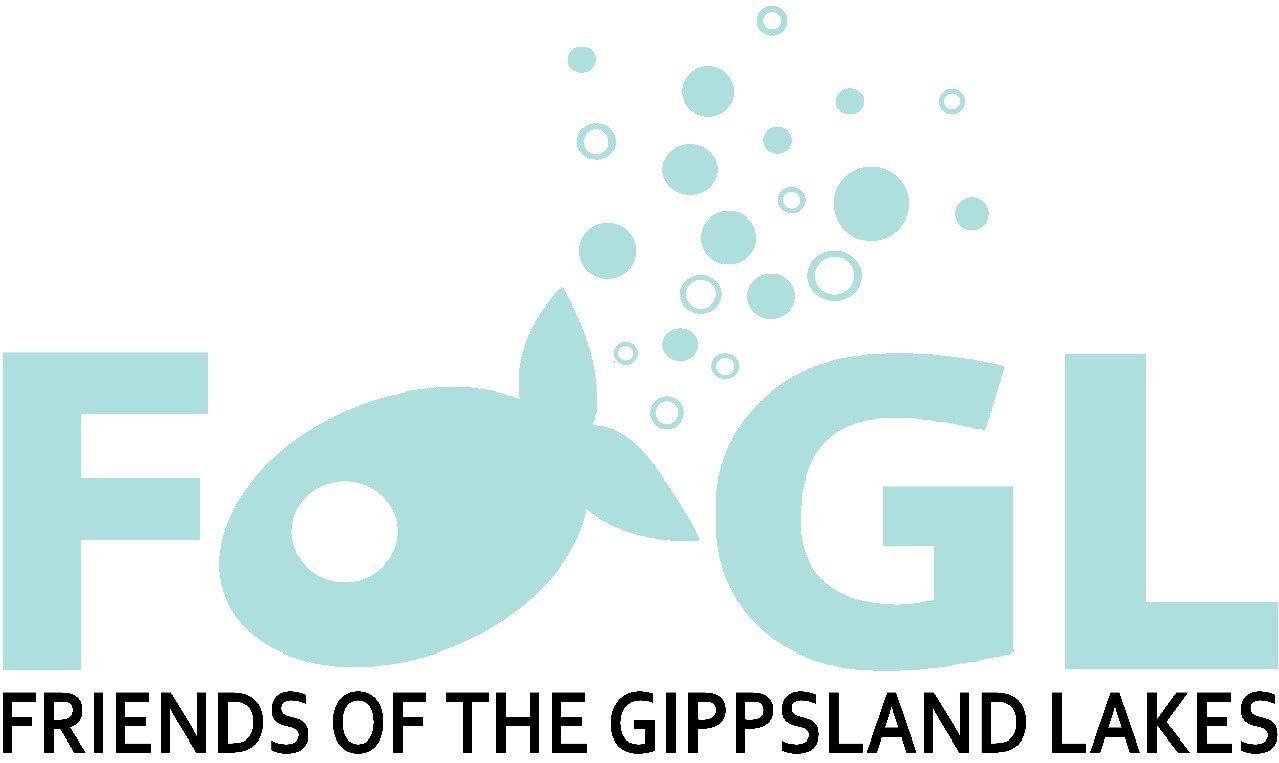Why Monitor Water Quality ?
There is much discussion and speculation about the future health of the Lakes, but much of this is based on hearsay and assumptions, rather than evidence based science. The only way to assess the true health of the Lakes system is to measure key indicators at a suitable number of locations, and on a regular basis. This allows for “early warning” of concerning trends or significant changes that may be impacting the ecosystems and appropriate action to be taken.
Who should be doing it ?
We maintain that all water quality monitoring across the Lakes system should be performed by an independent and well resourced watchdog ( e.g. EPA ), with the data made publicly available. This should be part of a long overdue comprehensive environmental audit of the Lakes system as called for by Darren Chester M.P. in Federal Parliament recently. We will continue to lobby for this.
Monitoring Sites and Agencies
A number of agencies currently monitor water quality around the Lakes. Only some of this data is made publically available.
East Gippsland Catchment Management Authority operates auto collector sites gathering a wide range of parameters. This appears to have now been reduced to a few sites ( about 10 around the Lakes ) as seen on the map below. These are confined mainly to the immediate catchments and wetlands ( e.g. MacLeod Morass and Heart Morass ) rather than the lakes themselves. The raw data and graphs from the sites is publicly available on the DEECA Water Measurement Information System ( WMIS ) web portal. Many of these sites appear to only collect water level data while others record a mixture of water quality parameters such as pH, EC ( salts ), Dissolved Oxygen, and Turbidity and Water Temperature. It appears the important nutrients ( e.g. Phosphates and Nitrates ) are no longer measured. The WMIS site also has a number of trend reports however the last of these appears to have been uploaded around 2016.
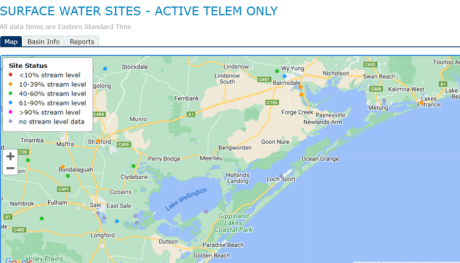
The Environment Protection Authority ( EPA ) also monitors for water quality at six sites ( currently ) around the Lakes. Raw data from these sites is not publically available on the WMIS, nor are the exact monitoring site locations. Instead EPA produces an annual “report card” for all the catchments across Victoria.
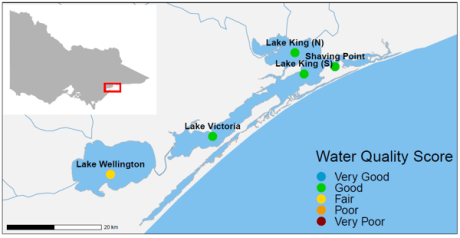
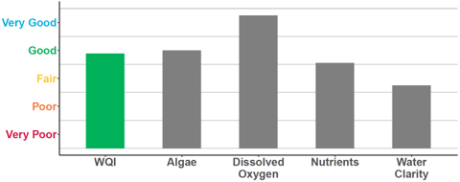
Southern Rural Water also performs some water testing for outflows from the Macallister Irrigation District into Lake Wellington. Thid includes important phosphate loads. This data is currently not publically available on the WMIS. We are working with SRW and have been given access to this data and their reports. Our feedback has been welcomed.
NGOs such as Marine Mammal Foundation also conduct some water testing.
We think other agencies such as East Gippsland Water may also conduct some water testing.
Currently we are not aware of any comprehensive or regular testing for emerging toxicants ( e.g. PFAS ), microplastics pesticides, herbicides or nitrogen loads entering the Lakes by any agency.
Waterwatch
FoGL is doing water quality monitoring at some sites around the Gippsland Lakes under the Citizen Science Waterwatch program. We hope to expand this depending on funding and volunteer availability.Monitoring Sites around Gippsland Lakes. Waterwatch Victoria is a Citizen Science based water monitoring program that has been running since 1993. Around 10 to 15 years go there were, by our count, over 100 active Waterwatch sites around the Gippsland Lakes, and bordering wetlands and river mouths ( see map from Waterwatch below ). The current Waterwatch database shows only around 20 sites as still being actively monitored ( around 10 in the La Trobe River / Heart Morass area, 7 sites along Forge Creek near Paynesville, and the three that FoGL has just re-activated around MacLeod Morass, Jones Bay and the Tambo River ). That means in our estimate, that only around 15% of the original sites are still being actively sampled. Specialised equipment and training is required to collect samples and obtain accurate measurements. A knowledge of the reasons to take the various measurements is also important. FoGL now has a limited amount of test equipment supplied by the East Gippsland Catchment Management Authority, and some other equipment we have recovered and refurbished. This gives us the ability to measure the following parameters at a limited number of sites :
- Phosphates ( a nutrient that can be a key contributor to toxic algae blooms etc )
- pH ( measure of acidity or alkalinity )
- Electrical Conductivity ( EC ) ( a measure of different salts in the water )
- Turbidity ( clarity of the water )
- Dissolved Oxygen ( DO)
- Water and Air Temperatures

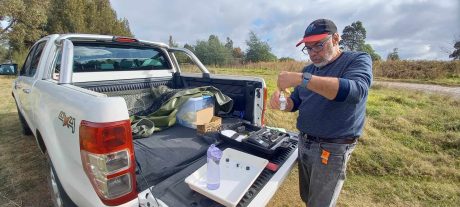
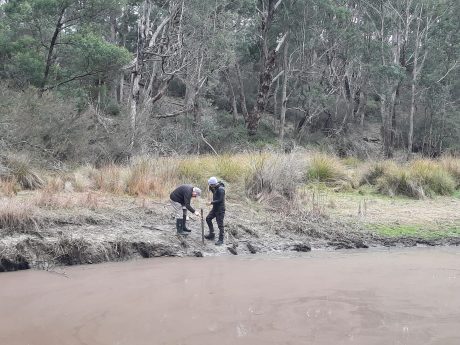

Data Entry and Verification
When the field results are gathered, they are entered onto the Waterwatch Data Portal by the volunteers. Information such as weather conditions, and other observations are also recorded. All entered results must be audited for quality by a Waterwatch Coordinator ( usually employed by a government agency such as a Catchment Management Authority ) before they are accepted for publication.
Any member of the public can retrieve the data and observe trends and graphs.
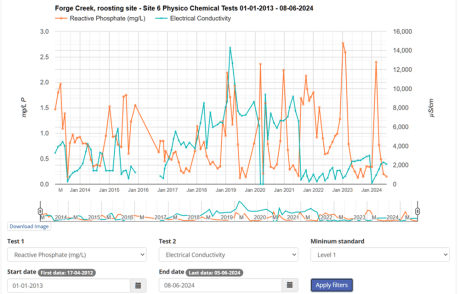
You can get involved
We hope to roll out the Waterwatch water testing to many more sites around the Gippsland Lakes. This is only really limited by available test kits and volunteers in the various locations to do the testing.
We will provide the necessary training required. If you are interested in becoming involved please contact us on contactfogl@gmail.com
